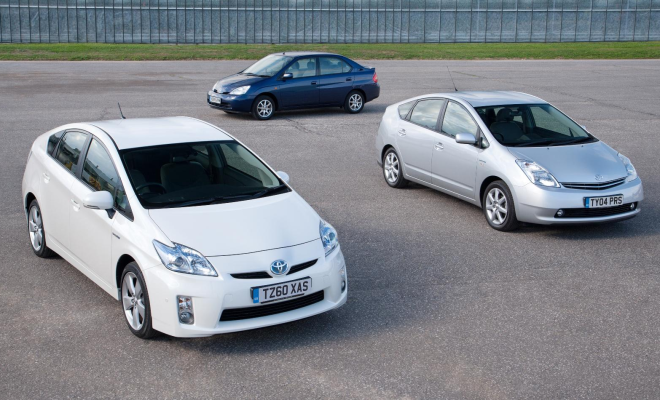by Antony Ingram 
Hybrid cars are part of the landscape these days but it’s easy to forget where they all began.
While a few manufacturers had experimented with curious electrified concoctions over the years, it took Toyota with its Prius and Honda with its Insight to bring hybrid vehicles to the mass market. Mass market is a relative term of course – early sales were modest and neither car was truly mainstream. Today, Prius is a household name and a byword for clean motoring, while vehicles like Renault’s Zoe and BMW’s i3 may yet succeed in bringing fully electric, battery powered cars in from the cold.
The one thing hybrids and plug-ins have rarely been is fast or luxurious. Often they’ve offered exactly the opposite, with early products a risk-stripped toe-dip into the market rather than a headlong plunge into the deep end with something outrageous, flash, ostentatious or expensive.
Until now. Within the next few years, the number of carmakers without hybrid or electric vehicles in their fleet will be outnumbered by those that do – and that includes performance and luxury brands. So what hybrids and electric vehicles might you find on the forecourts of “prestige” car specialists like Opulent Cars over the next few years?
The supercars
Right at the top of the scale you’ll find McLaren, Ferrari and Porsche. Each is bringing its own flavour of plug-in hypercar to the market and each represents the pinnacle not just of hybrid technology, but automotive technology in general.

The McLaren P1 and Ferrari LaFerrari both boast power outputs over 900 horses, while the 887bhp Porsche 918 Spyder can’t be considered shy or retiring. Moreover, each features enough electric range to potter around town as silently and cleanly as a bicycle.
And for an all-electric option, try the Mercedes-AMG SLS. It powers all four wheels to get to 62mph faster than its petrol-powered equivalent.
The sports cars
Most exciting by some margin of the sub-supercars is BMW’s impending i8. It’s the flagship of BMW’s ‘i’ range but should attract more than just green-minded souls – combined output is north of 360bhp and a 0-62 sprint in the mid-fours is also on the cards.

BMW i8 aside, the hybrid sports car market is still relatively small – for now. Rumours abound that Nissan’s next GT-R, Mitsubishi’s next Evolution model and Toyota’s next Supra will all feature hybrid drivetrains, while Toyota has confirmed plans for a hybrid GT86. And if you want to go all-electric, there are still plenty of second-hand Tesla Roadsters on the market...
The luxury saloons
Talking of Tesla – and who isn’t these days? – the Tesla Model S sits pretty in the executive saloon market in the United States and is already proving popular in mainland Europe, following its recent launch in left-hand drive markets. All-electric, the Model S offers range is in a realistic 250-300 mile bracket, extremely high levels of safety, and performance to worry some bona-fide sport saloons.

Tesla isn’t the only carmaker to offer electrically-assisted luxury, however. Mercedes-Benz is set to bring its S500 plug-in hybrid to market – joining the non-plug-in S400 Hybrid – while Porsche recently replaced its Panamera Hybrid S with a plug-in model earlier this year. You can take the big Porsche’s 91mpg rating with a grain, pinch and whole bagful of salt, but exemption from London’s congestion charge is always something to savour – particularly in a car that could cross the capital in about half a minute, if it wasn’t for all that traffic in the way.
skip to main |
skip to sidebar
Most Popular
-
Mercedes-Benz C 220 CDI review – Executive SE edition
-
Renault Scenic versus Citroen C4 Picasso
-
Facelifted Golf GTD is both better and worse
-
Green goddess: driving the original Citroen DS
-
Range Rover Evoque review – eD4 and SD4 editions
-
Softly, softly: Citroen C5 Aircross reviewed
-
Lexus GS 450h review
-
Mild-mannered hybrid: Kia Sportage 48V driven
Browse by Brand
Most Recent
 © 2005 to GreenMotor.co.uk | Contact | Terms & Conditions | Cookies | Privacy | Powered by
© 2005 to GreenMotor.co.uk | Contact | Terms & Conditions | Cookies | Privacy | Powered by  | Close
| Close

